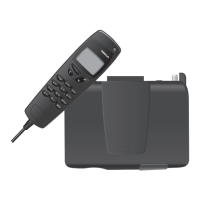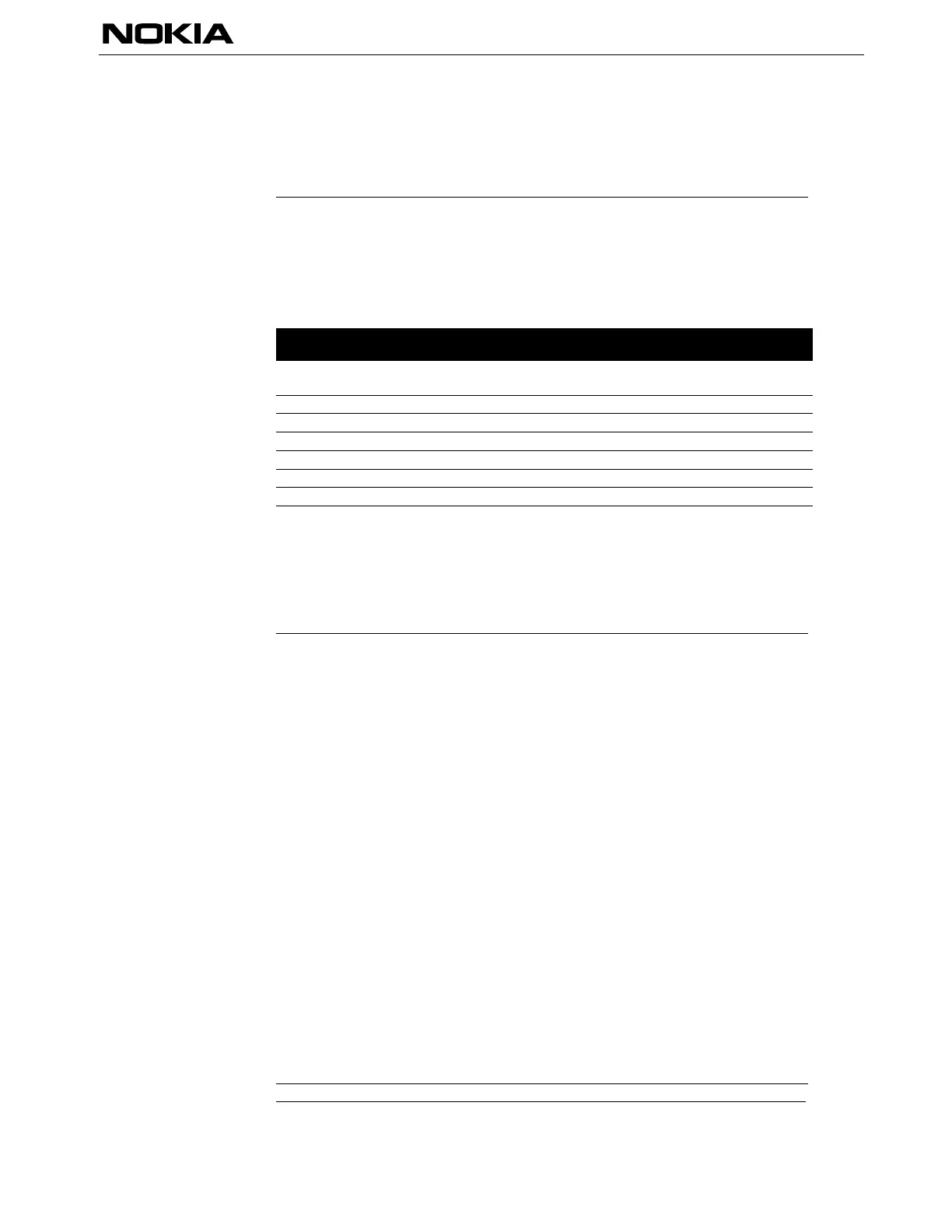Nokia 6090 AT Command Set 58
A Answer
This command answers an incoming call. The call is indicated by the RING or
+CRING message on the terminal equipment or by the number 2 if numeric mode
has been selected. This command can also be used to switch call mode from voice to
data when an alternating call is active. (V.25ter)
Syntax:
ATA
Answer incoming call.
All the result codes below are not in V.25ter. Before one of the codes may be
returned some of the following: +CR (or CARRIER), +ER, +DR, or +ILRR (in that
order). Answer command is also used to control alternating mode calls (see GSM
07.07).
Result Codes
Possible verbose
result codes (V1)
Numeric
(V0) Description
CONNECT
1 data/fax call established; rate 300 bps (or X
forbids rate display)
CONNECT 1200
5 data/fax call established; rate 1200 bps
CONNECT 2400 10 data/fax call established; rate 2400 bps
CONNECT 4800 11 data/fax call established; rate 4800 bps
CONNECT 9600 12 data/fax call established; rate 9600 bps
ERROR 4 command cannot be actioned
NO CARRIER 3 call could not be established
OK 0 command aborted
B Communications Standard Option (CCITT/Bell mode)
This command has no effect on the data software. It is included for compatibility
reasons. (De facto.)
Syntax:
ATB[<n>]
Values for <n> [0]...1.
D Dial
This command initiates a call. (V.25ter) When a call is initiated, the command must
contain the called party's number or a directory entry which contains the stored
number. The ATD command can also be used for sending DTMF tones and for
switching call mode from voice to data when an alternating call is active. (GSM
07.07)
When the Nokia 6090 tries to reach a number and fails to establish a connection,
further attempts will be delayed, i.e., successive attempts to dial the same number
will be rejected for a short period of time, and the response DELAYED will be
displayed. The delay period only lasts for a few seconds at first, however, if you
continue to try to get the call through and fail, the delay will be prolonged for a few
minutes. Finally, the called number will be included on a list of so-called blacklisted
numbers. The response BLACKLISTED will be seen on the screen. The data
software will not accept any new attempts to that number before you press any key
on the cellular phone keypad. This user action erases the number from the list and
enables you to call the number again. The purpose of blacklisting numbers is to
conserve the network's resources.
NOTE: +VTS command or comma modifier (e.g. "ATD,1234"; in this case the first
comma do not cause a pause) can be used to send DTMF digits.
Syntax:
A semicolon character needs be added when a voice call is originated.
ATD[<dial_string>[;]]
Dials the number in a dial_string.
ATD> mem<n> [;]
Originate call to phone number found from
location in a specific memory mem, which
is one of the two letter memory
abbreviations as returned by +CPBS=?
(without double quotes); location range
can be queried with +CPBR=?; note that

